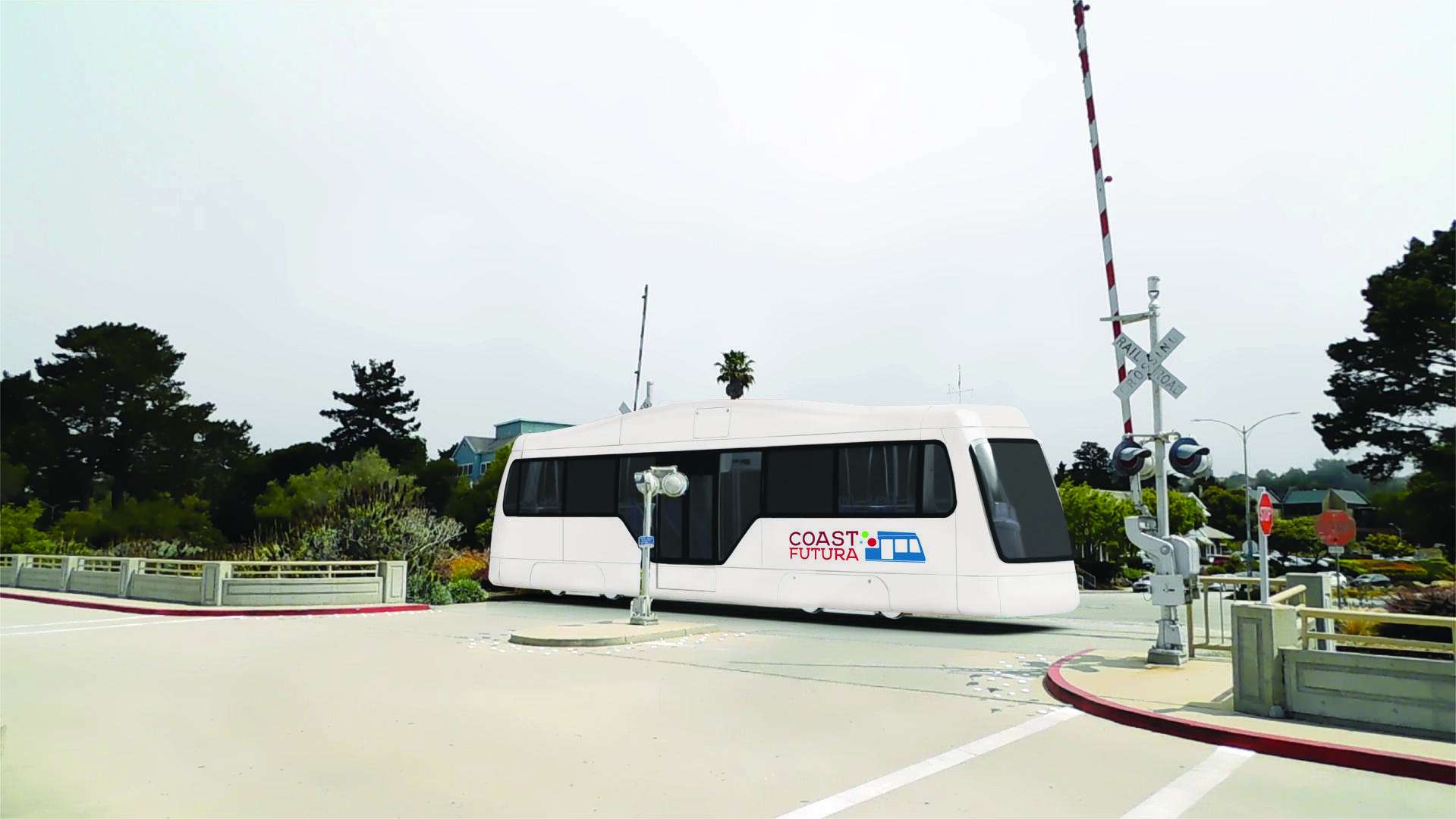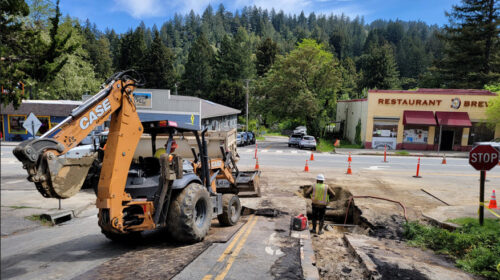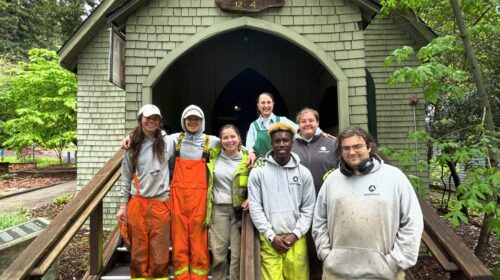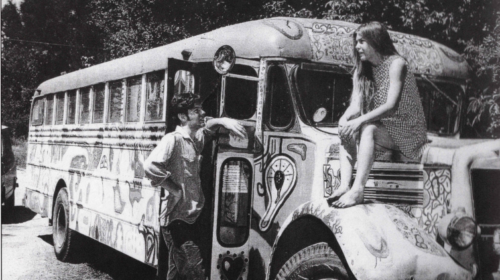Accusations Abound as Electric Streetcar Demo Rolls Out
By Jayme Ackemann
A private excursion train operator is hosting a demonstration project for one vision of rail service using a “ZEMU,” or zero-emission multiple unit, that could operate on tracks between Watsonville and Santa Cruz.
The Coast Futura, operated by TIG/m, offered tickets for two weekends in October to show Santa Cruz County residents what an electric streetcar might be able to offer the region as it grapples with a decision about the best use for the tracks.
There’s room for a healthy debate about what transit solutions might benefit all of the various interests trying to resolve traffic congestion and what role the out-of-service corridor might play without leaning on unnecessary fear tactics and obfuscation to make an argument.
Take claims about “dark money” funding the demonstration project. Those claims are among a raft of somewhat incendiary inferences made by Greenway, a mid-county group opposing rail alternatives previously led by 1st District Supervisor Manu Koenig prior to his election.
The money probably isn’t any “darker” than the funding behind Greenway. Coast Futura is merely the name of the demonstration project being operated by a joint coalition that includes TIG/m and Santa Cruz Big Trees Pacific Rail, which owns Roaring Camp Railroads and operates freight service in south county.
The big picture is that Santa Cruz County has a traffic congestion problem that disproportionately impacts residents in the southern part of the county. A rail solution is one possible option that could help to address that congestion but has never been intended as the sole solution – which is another issue that rail opponents ignore when they suggest this project should be abandoned because alone it can’t resolve all of the traffic congestion.
Santa Cruz County Regional Transit Commission studied a host of projects that would address the congestion along this corridor as part of its Transit Corridor Alternatives Analysis Study. While rehabilitating the rail corridor is among solutions that could have a meaningful impact on congestion – a bike-only trail probably doesn’t do anything more to solve that problem than the rail opponents suggest Coast Futura might. So this talking point probably doesn’t bear much fruit.
Greenway goes on to ominously suggest that allowing a for-profit private contractor to operate a county service on county-owned, right-of-way would be somehow inappropriate and Supervisor Koenig shares this concern.
“The coastal corridor is owned by the public. Anyone should be able to bring whatever wheels they want and ride on a trail for free,” Koenig said in an emailed statement. “We should not have to pay for a ride on some mall trolley to experience the beauty of soaring over the Capitola Trestle or Watsonville wetlands.”
In his statement, Koenig also pointed out that contracting for essential county services is different, but I fail to see the distinction between contracting out the county’s fire recovery responsibilities to for-profit operator 4Leaf, Inc. and contracting with a private operator for transit service. That’s also a fairly common operating model in the Bay Area.
Caltrain is a publicly-owned service, using tracks owned by the counties through which it operates, and operated entirely on contract by a for-profit operator – TransitAmerica Services Inc. (TASI), a subsidiary of Herzog. Coincidentally one of the individuals behind TIG/m also formerly advised Herzog, so perhaps they aren’t as inexperienced as Greenway would suggest.
The fact is there are many publicly-owned right-of-ways upon which you cannot walk or ride your bicycle. Highway One south of Santa Cruz is one such example; the Caltrain tracks extending more than 50 miles between San Jose and San Francisco are another.
Traffic congestion and its impacts on the quality of life for those residents routinely delayed by it are social justice issues in that the negative impacts more frequently accrue to lower-income individuals who are forced to rent or purchase housing further away from job centers due to affordability issues but then find themselves losing hours of their lives to congestion.
We need to start talking in a civil way about real solutions. Streetcars and bike trails may not get us there but there are good-faith arguments on both sides to be heard without all of the incendiary or misleading rhetoric.
Jayme Ackemann is a public affairs consultant and freelance writer. She has worked on major capital investments and water infrastructure construction projects in the Bay Area. Jayme is a resident of Ben Lomond.
Featured photo: Coast Futura electric streetcar





Thank you for a clear and critical examination of the political issues.
Thank You for a straightforward reporting job. I hope folks will realize the ever growing need for alternate transit options on the rail corridor. We should continue the trail , save the rail and connect with buses. Lets unite this county, share and prosper.
There are quite a few items in this article that the author has not stated correctly. The author states that the line is out of service, yet even in its decrepit state with washouts, boards dangling from beach trestles, unusable rail crossings, and rotting rails, it is still considered an active line.
The claims of dark money are also clearly warranted. Proponents of a Greenway are operating by the book with a 100+ strong all-volunteer team gathering signatures from voters from across the county. All donations are registered as well as expenses per FPPC guidelines. Friends of the Rail and Trail, an organization that has existed for 20 years has failed to register themselves correctly in their opposition and hides behind a 501c3 fiscal sponsor, something usually used for small upstart charities, not well established and well funded (Over $80,0000 raised in their spring challenge) operation. Friends of the Rail and their benefactor ‘The Social Good Fund’, a clearing house for fiscal sponsorship, refuse to provide their list of sponsors and the amounts they contribute. Yes-Greenway on the other hand HAS reported this information and is publicly available on the county website.
The author also fails to note that the private, for -profit operator TIG/m that made an unsolicited proposal has absolutely no experience in public transit or freight operations. in 16 years, the small company started by a group of theme park engineers have only produced 10 peoject, 7 of which are already dismantled. The remaining 3 implementations are at malls and a tourist center where speeds and distances are a mere fraction of what would be required of what would be required for Santa Cruz County. It’s the equivalent of asking Tuff-Shed to make an affordable housing apartment complex. It’s not just Manu Koenig at the RTC who is against this proposal, the staff of the RTC also wrote in their report to be presented at the November 4th meeting “the trolley demonstration did not provide information that would make commuter rail easier or less expensive to implement….the team did not understand the existing condition of the SCBRL, did not understand the need to environmentally clear a new commuter passenger rail project, was not experienced with delivering a major infrastructure development project of this nature, and had no experience maintaining an asset of this nature. The team also did not seem to have the experience necessary to assume the freight common carrier obligations needed to provide freight operations per the ACL, and TIG/m had never operated on a freight line. Furthermore, RTC did not have the public funding commitment necessary for a P3 relationship”
The simple facts are a trolley will not solve our traffic, environmental and social justice issues. The company behind the proposal is the sole supplier of such technology in the United States and does not have the experience or financial strength to mitigate the risk of going bankrupt trying to manage a large complex operation. Even if successful, the level of ridership will be extremely low and not make an impact on Highway 1 traffic, hence no impact in our climate impacting emissions. It still leverages a commuter mentality. Rather than bringing good high paying jobs to south county, it requires a train ride and 2 buses to get to an opportunity.
That leaves us with the final point in the author’s message. How do we have a civil discussion about concrete solutions? The RTC has spent millions upon millions of dollars on studies trying to justify implementation of a train and yet we wound up last year with a business plan that showed that the money simply isn’t there and a deadlocked commission which halted any further work. The board of supervisors has avoided the issue and really, the only thing we are left with is to vote on the issue. Luckily there is such a plan in place with the Yes-Greenway initiative which should gather enough signatures to be on the June 2022 ballot. It will be the first direct vote on this contentious issue. Whether you are for the Greenway or want a train, I urge everyone to sign the petition so we get the opportunity to vote and get the true voice of the voter involved and can really take a step forward rather than wishing for a dialog when there is no set foundation as we have seen for the last 20 years.